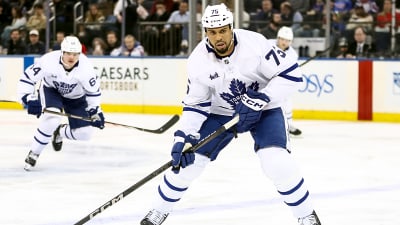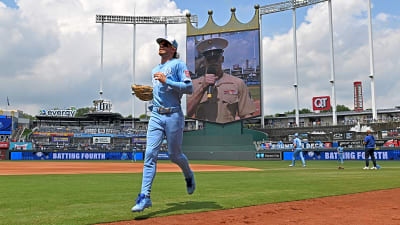As the 2025 summer transfer window heats up across Scottish football, clubs are wheeling and dealing with differing levels of urgency, and not all are making waves in equal measure…
Having a look at all the transfer incomings and outgoings, based on Sky Sports data – so apologies if it’s not right up to date to the day – the most active in terms of incomings have been theRangers and Kilmarnock have been notably aggressive, each with a flurry of incoming signings and strategic loan deals.
Dundee United and Livingston follow closely, opting for a blend of undisclosed fee deals and experienced free agents, meanwhile Celtic, Aberdeen, Hearts, and Motherwell could be described as being moderately active, and have bolstered squads with several fresh faces and some strategic loanees.
Meanwhile St Mirren, Dundee, and Hibernian have conducted less business with a focus on permanent acquisitions and freeing up wage budgets. But it’s the least active of clubs in terms of incomings that catches the attention, from a Celtic perspective at least.
Falkirk newly promoted and returning to the top flight, have made just two signings: Scott Bain (from Celtic, free) and Brian Graham (Partick Thistle, free).
Falkirk’s only incoming deals were on free transfers and show a clear contrast to the squad overhauls seen elsewhere in the division. This may be an ongoing problem for Falkirk considering they are currently heavily funding the return of their youth academy which was mothballed when Paul Hartley was manager there.
So, as we consider the club with the quietest of summer rebuilds so far, it’s hard to ignore Falkirk’s situation as possibly mutually beneficial for Celtic and the Bairns.
Newly promoted after back-to-back promotions under John McGlynn, the Bairns are staring down the barrel of a Scottish Premiership season with a thin squad, limited financial muscle, and little serious recruitment so far.
But rather than that being a concern, it might just be an opportunity—and for Celtic too. After all, Falkirk boss John McGlynn is no stranger to Celtic’s inner workings.
A former coach at Parkhead, McGlynn has long admired and adopted the tactical structure used by Brendan Rodgers—fluid 4-3-3s, positional play, and building from the back. His teams play brave football and demand high technical and tactical intelligence from young players.
If Celtic are seeking a landing spot for promising players to learn Celtic football in real time, under Premiership conditions, McGlynn’s Falkirk is as close to a like-for-like system as you’ll find outside of Lennoxtown.
With Callum Osmand arriving from Fulham—a technically gifted striker yet to kick a competitive ball, and Hayato Inamura, a footballing Japanese defender with obvious talent but some questions around his physicality, Celtic have two high-upside projects who need exposure to Scottish football this season but if they stay at Celtic it may be sub appearances rather than too many starts.
Add to that the likes of Johnny Kenny, hungry to find rhythm and confidence in a system that suits him, or Ben Summers, who has looked good in pre-season, or Kyle Ure who looks a real prospect but plays the captain’s position, and you start to see the fit.
Falkirk has space. They need talent. Celtic has talent needing space.
And there’s another benefit to Celtic. Come mid-November, until perhaps the end of February, the Scottish Premiership becomes a war of attrition on frozen mud-heaps – possession-based football often becomes a pipe dream in some corners. Not in Falkirk.
The Falkirk Stadium’s excellent synthetic surface is among the best in the country, ensuring matches can go ahead in brutal weather while still being conducive to passing football. This is key for player development. Instead of losing match rhythm over the winter or playing 90 minutes of hoofball on frozen cow fields, young Celts at Falkirk would still be playing football—the kind Brendan Rodgers plays.
This was always going to be a tough season for Falkirk. They won’t survive on grit alone and they’ll need to add to their squad on what will no doubt be the lowest budget in the top-flight.
They’ll need quality. Celtic have quality. But it needs the right environment to develop. A loose partnership here of a few players could offer playing time, tactical education, and maturity-building experiences for Celtic’s loanees, while offering Falkirk the flair and depth they may lack, in numbers at least.
Celtic’s recruitment has been sensible—Inamura and Osmand are long-term bets. But if they’re not going to feature regularly this season at Celtic Park, let them play and let them grow.
And if they’re going anywhere, perhaps Falkirk is a good fit—a club whose manager understands the Brendan Rodgers philosophy, plays on a pitch that suits it, and would welcome them not just as loanees, but as key parts of the project.
In football, the best partnerships are those built on shared vision. This is one arguably staring Celtic in the face. It may well be a mutually beneficial move.
Help raise funds for Celtic Youth Academy by playing the Celtic Pools Weekly Lottery and you could win up to £25,000. The lottery is £1 per week. Click on image above to join.
More must-reads:
- MLS summer transfers: Could former top U.S. prospect land in L.A.?
- Chiefs sign star offensive lineman to $94 million deal
- The 'No. 1 overall MLB Draft picks' quiz
Breaking News
Trending News
Customize Your Newsletter
 +
+
Get the latest news and rumors, customized to your favorite sports and teams. Emailed daily. Always free!








